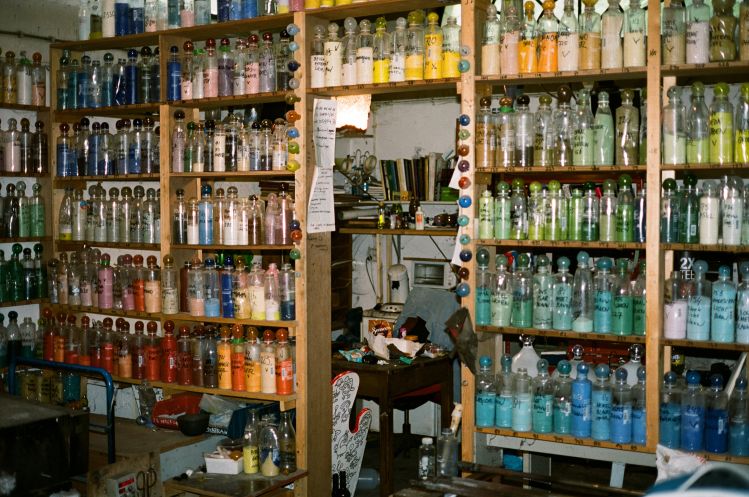Hem X Nienke Sikkema: Drip & stack
Glass is a material of infinite expression and ultimate ornamentation, used throughout history for decorative applications. Dutch designer Nienke Sikkema takes glass-making back to basics with her fluid and undulating forms. Her show-stopping Bubble Candelabra for Hem X is a celebration of this enigmatic material and her captivating approach. Bubble Candelabra is our first collaboration with Nienke Sikkema, curated by Modern Design Review.
Photography by Yeray Sabander, Interview by Laura Houseley
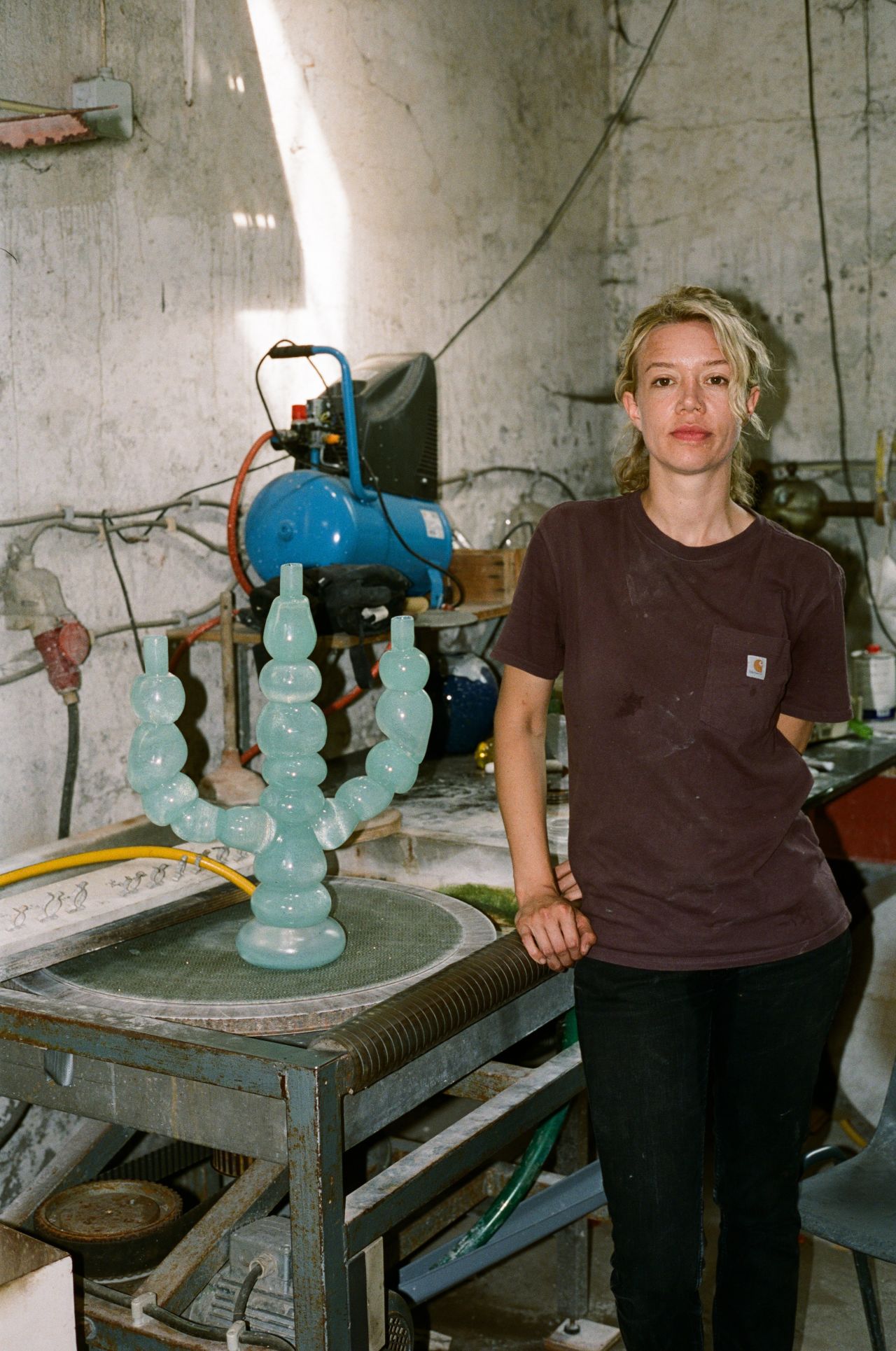
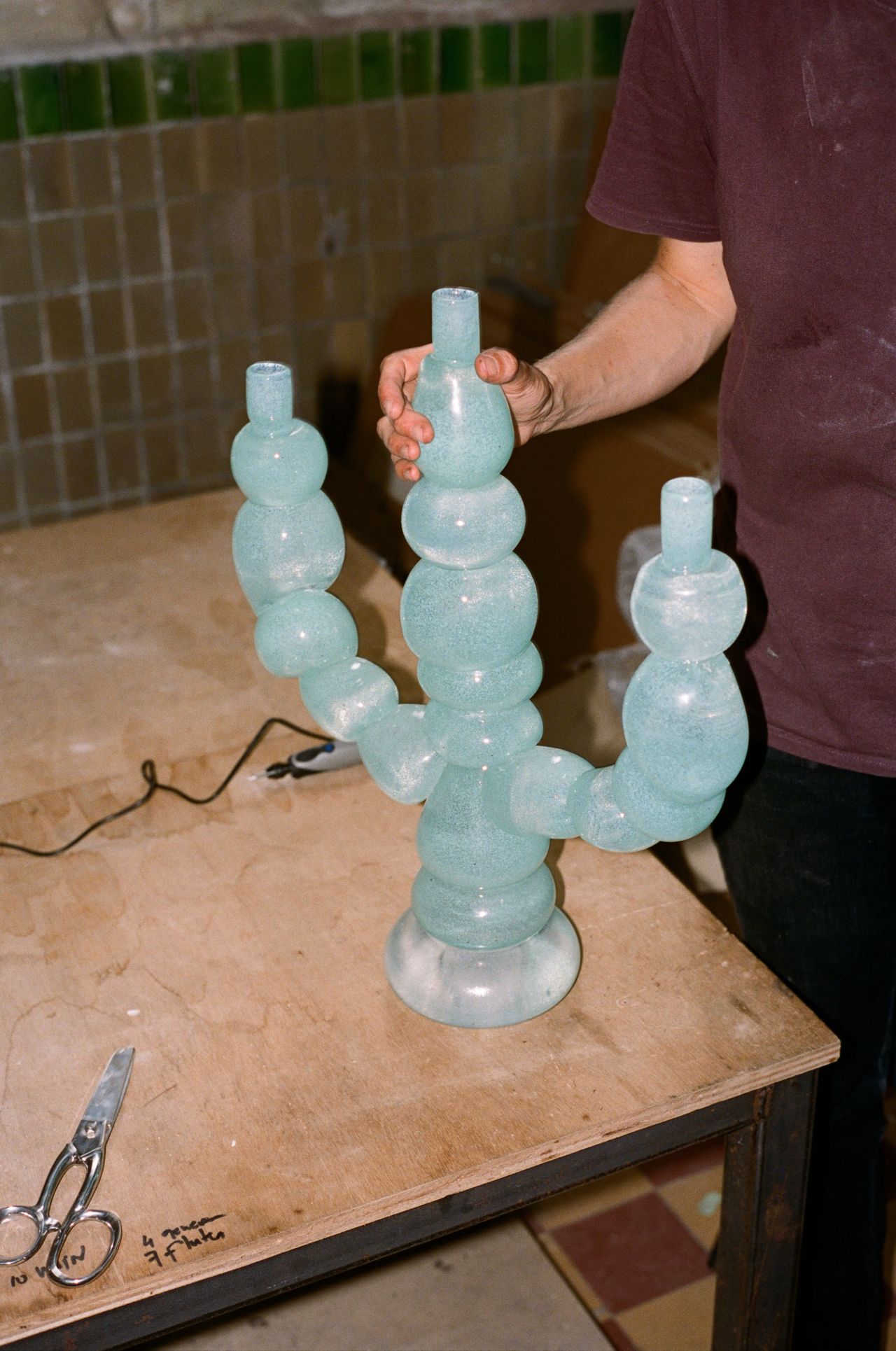
Nienke Sikkema spends her days in the heat of an ancient glass workshop in Gelderland, The Netherlands. The master glassblower there is Bernard Heesen, a celebrated glass artist and Sikkema’s mentor and collaborator. Heesen’s baroque decorative style and superb glass mastery has been an influence on Sikkema’s work since she began working as an apprentice there five years ago. Today, she and Heesen regularly work together on projects. Collaboration is necessary in glasswork, perhaps more than in any other craft., Sikkema points out; “almost nothing can be made alone”. Multiple hands, heft and skills are needed to complete most processes.
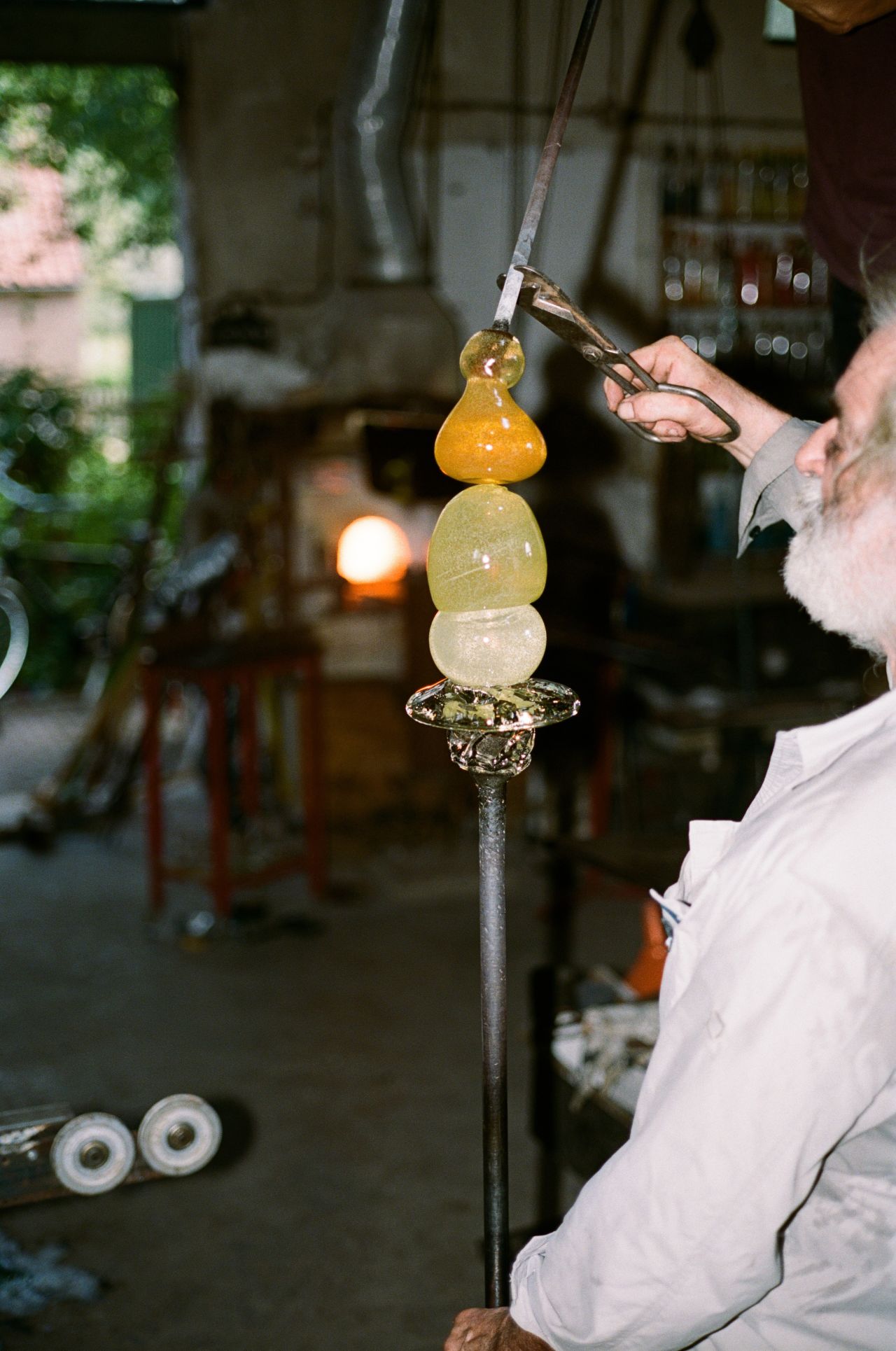
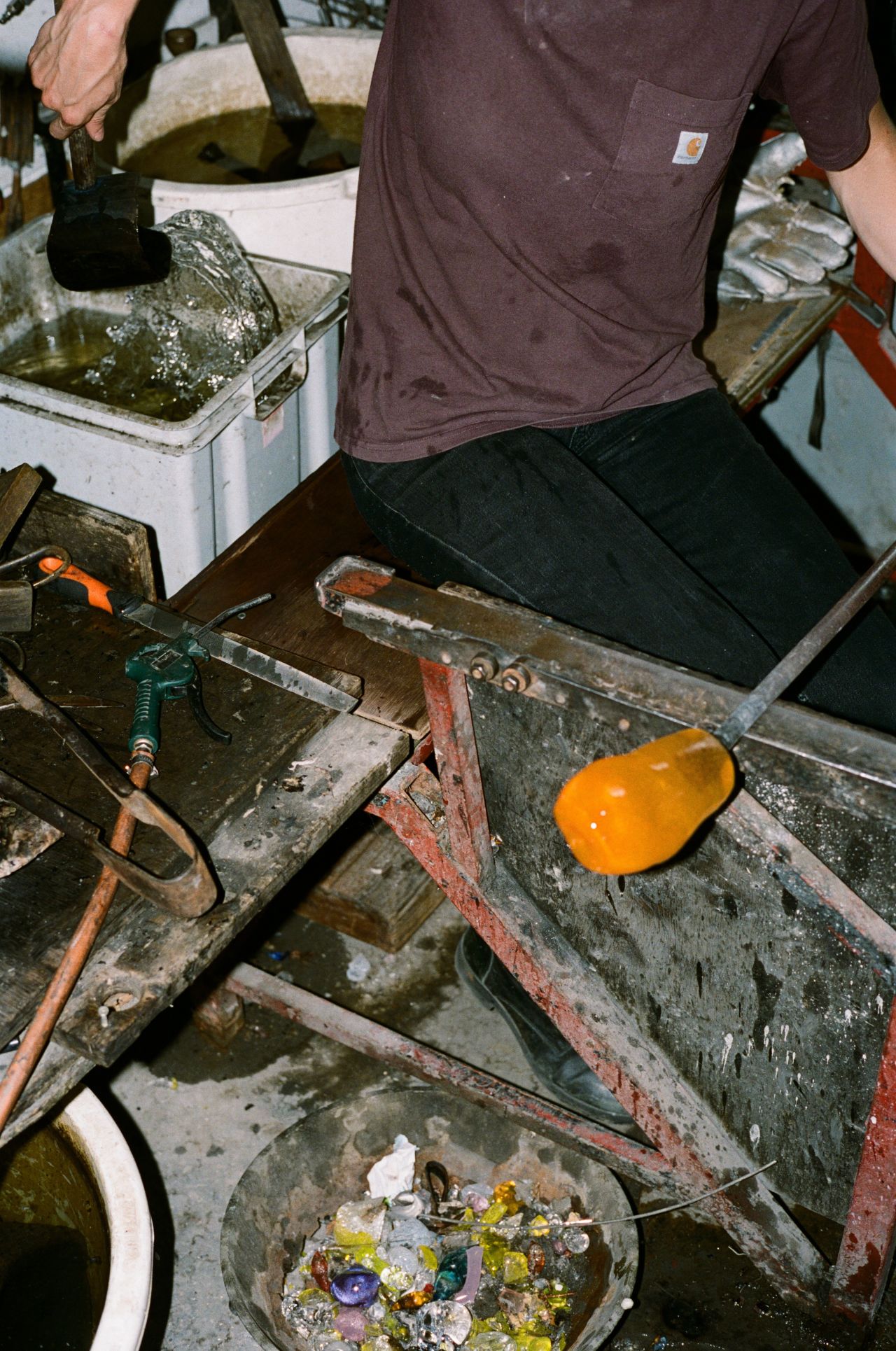
“I studied a mix of design and fine arts and hadn’t intended to work in glass. But I visited the workshop here during my graduation project and it was such an impressive place, it was like entering a candy store. I just thought 'Wow, this is magic’. But I was also always aware of how heavy glass was and working with it was very physical. I really thought, at that time, it was a male world. But here in Bernard’s workshop, all the assistants were women, and they were all really good.”
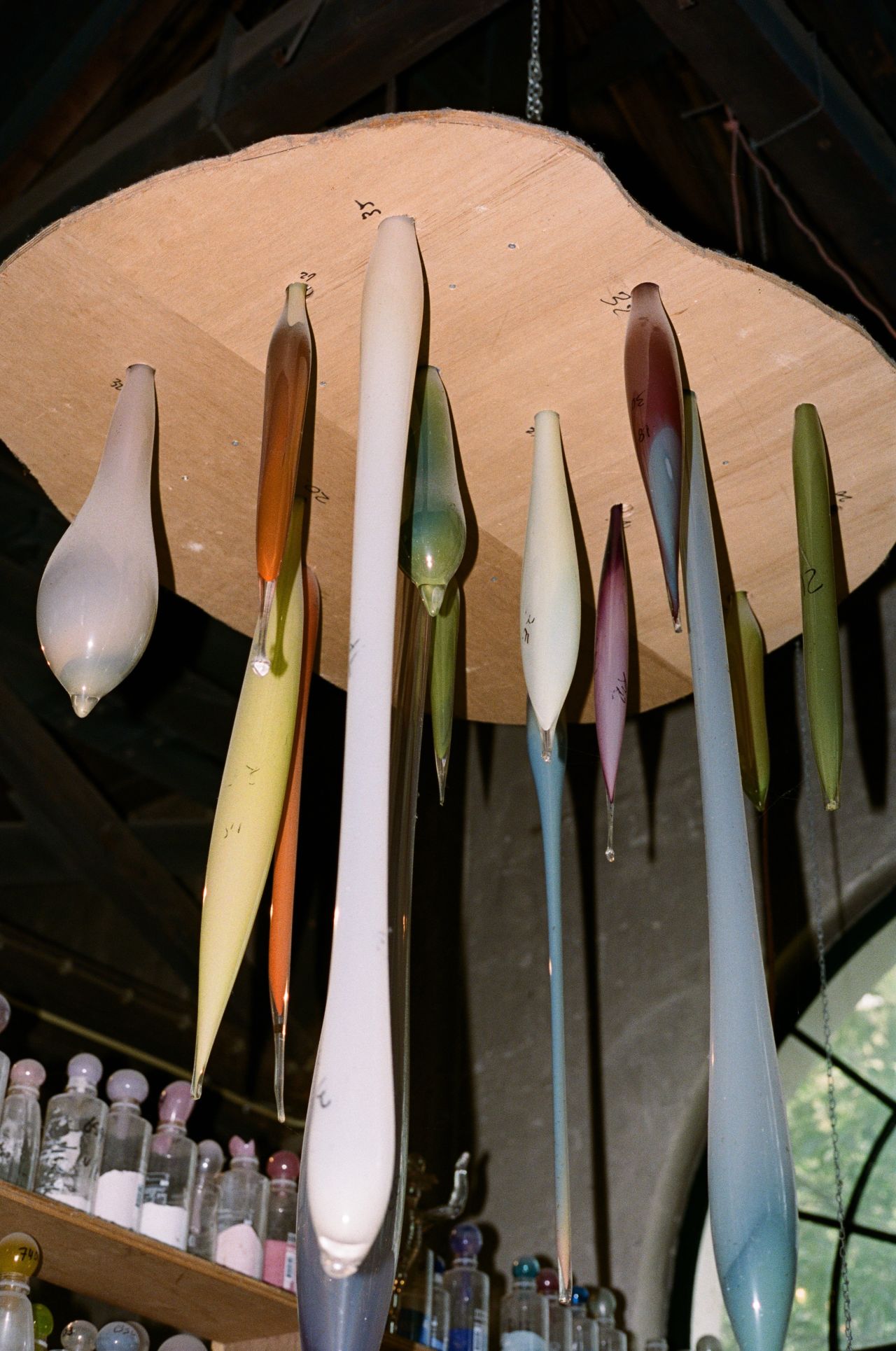
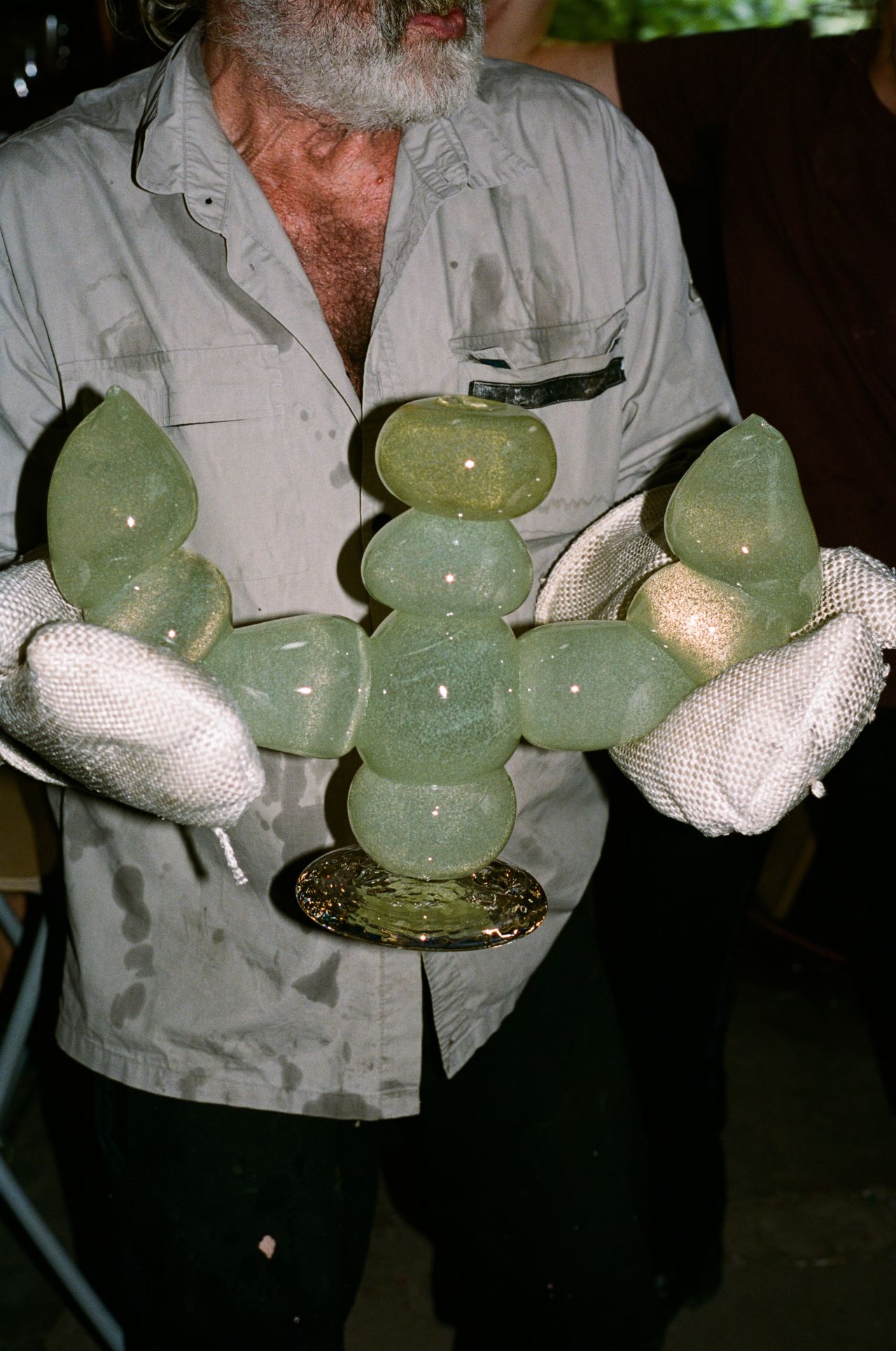
Sikkema stayed, and quickly developed her own style, characterized by an intuitive handling of glass and reductive approach to form. The lessons of craftsmanship have been turned into objects and Sikkema says that the process of learning to make glass can be tracked through her work. In a joint exhibition of Sikkema and Heesen’s work, “We exploited my lack of skill and knowledge.” Basically, everything I was taught, all the techniques, and showing me what could be done, I made a design out of it. And that is where my approach began.” Sikkema describes the benefit of working from a ‘naive’ standpoint. “All my designs derive from an honest exploration of what glass can do”. It is a purposefully alternative perspective to the traditions of glass making; “In the glass world, many people are completely focused on mastering the techniques of glassblowing, which can be very impressive. But sometimes the results are difficult to understand; the objects could have been made by a machine. I am not interested in that; I want my work to retain the fluid quality and the unpredictability of glass.”
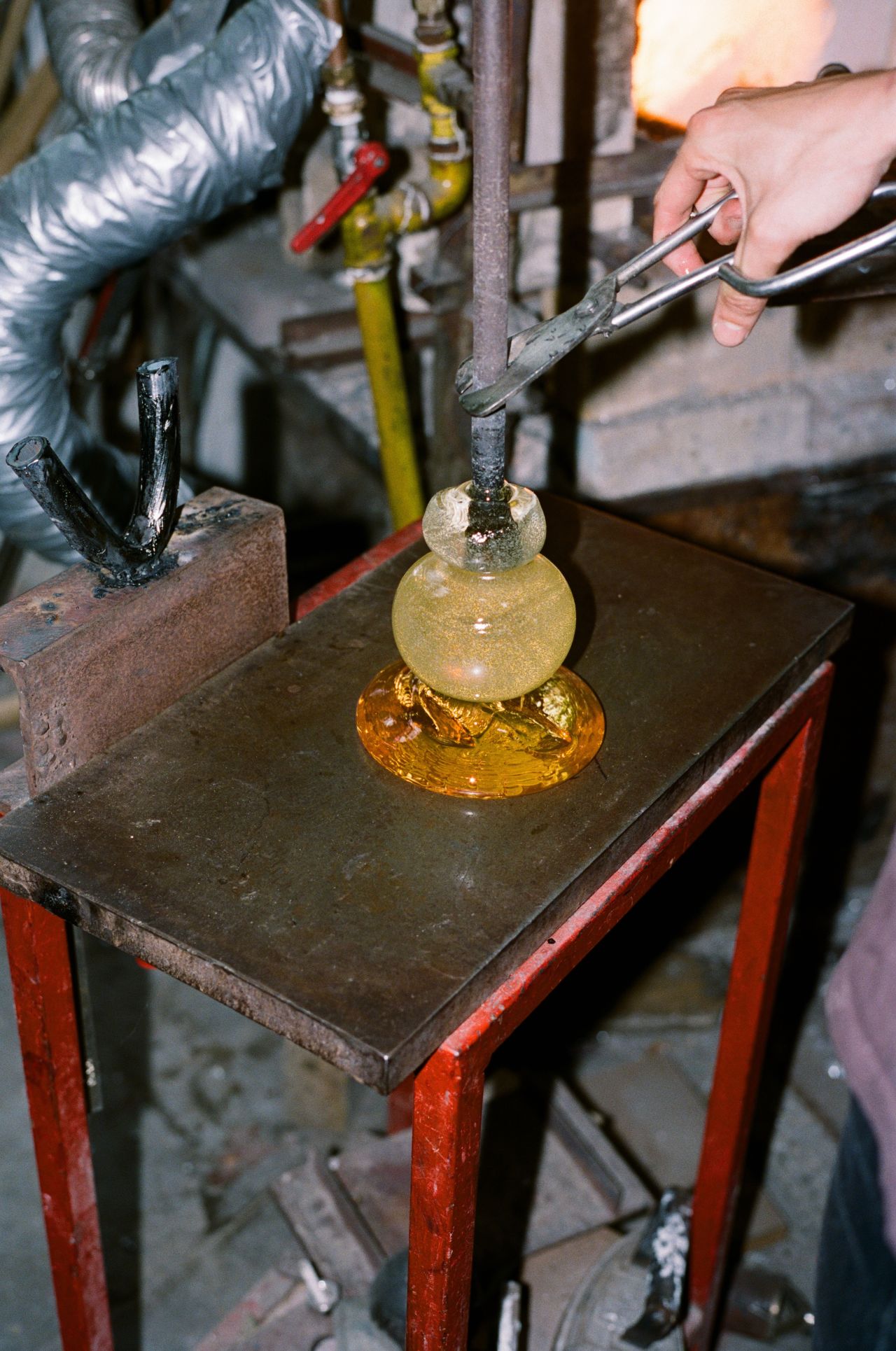
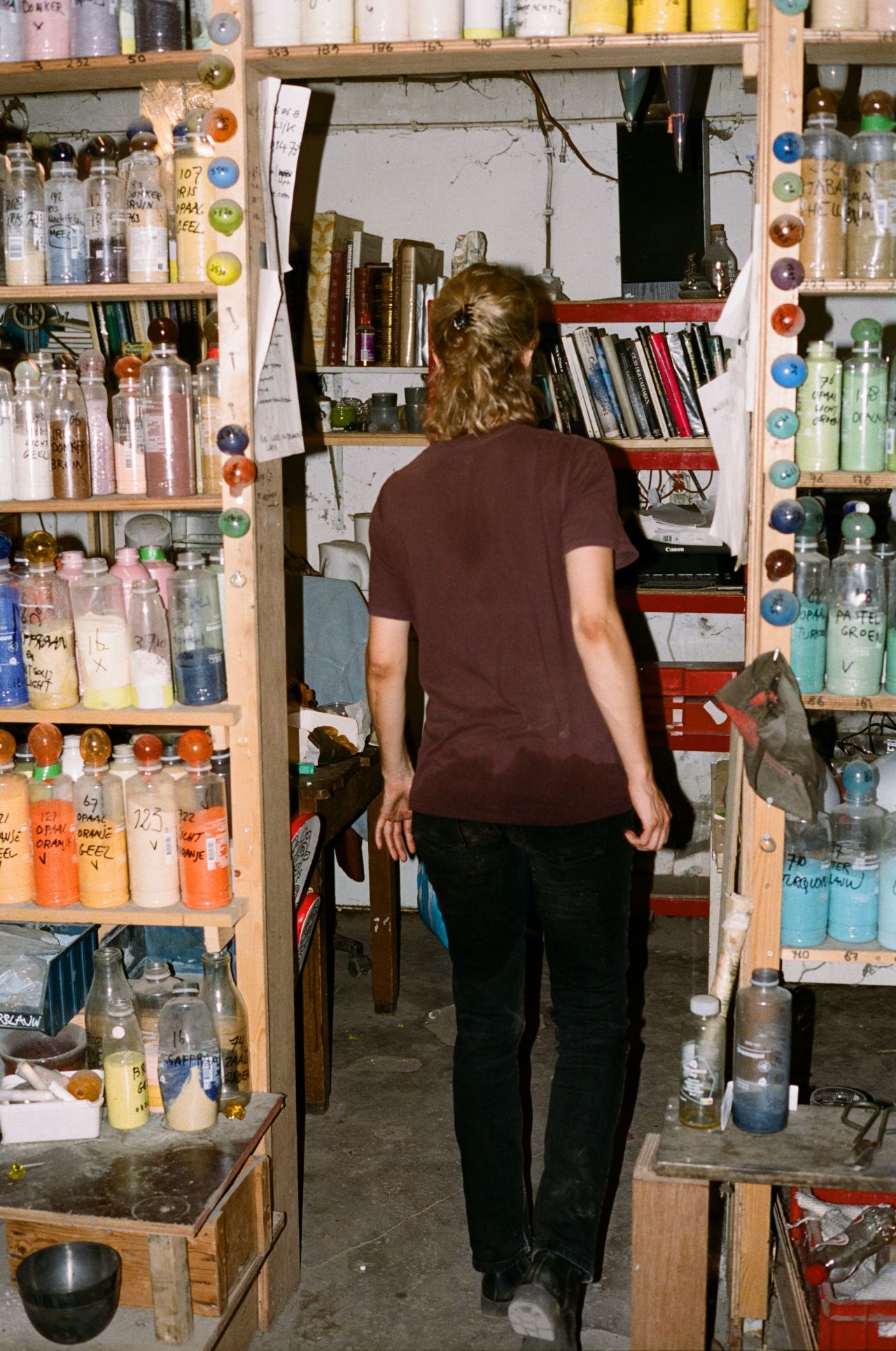
“All my designs derive from an honest exploration of what glass can do.”
In her most recent collections, Sikkema has bucked the tradition of collaborative making: “Theoretically speaking, all my objects can be made by myself. I have chosen processes that can most successfully be carried out by the individual.” In particular, the cutting of molten glass from the rod without blowing and then building structures from these dense masses. “Funnily enough, the Bubble Candelabras are (almost) not blown at all. Only the cups, where the candles sit, are blown elements. I cut pieces of hot molten glass. I cool them until they have the right shape and then carefully lay them on top of each other. The heat, and controlling it, is crucial. I’m not sure there is even a term for the technique. The ’bowl’ is a different piece of glass that I blow and add at the end.” The resulting Bubble Candelabras are therefore made from solid material and are very heavy. The thick semi-translucent glass has a mesmerizing opacity and the glass, although rigid and cool to the touch, appears liquid. “The color we chose for Bubble is ideal; it is almost as though the candelabras are wet, covered in morning dew.” Says Sikkema.
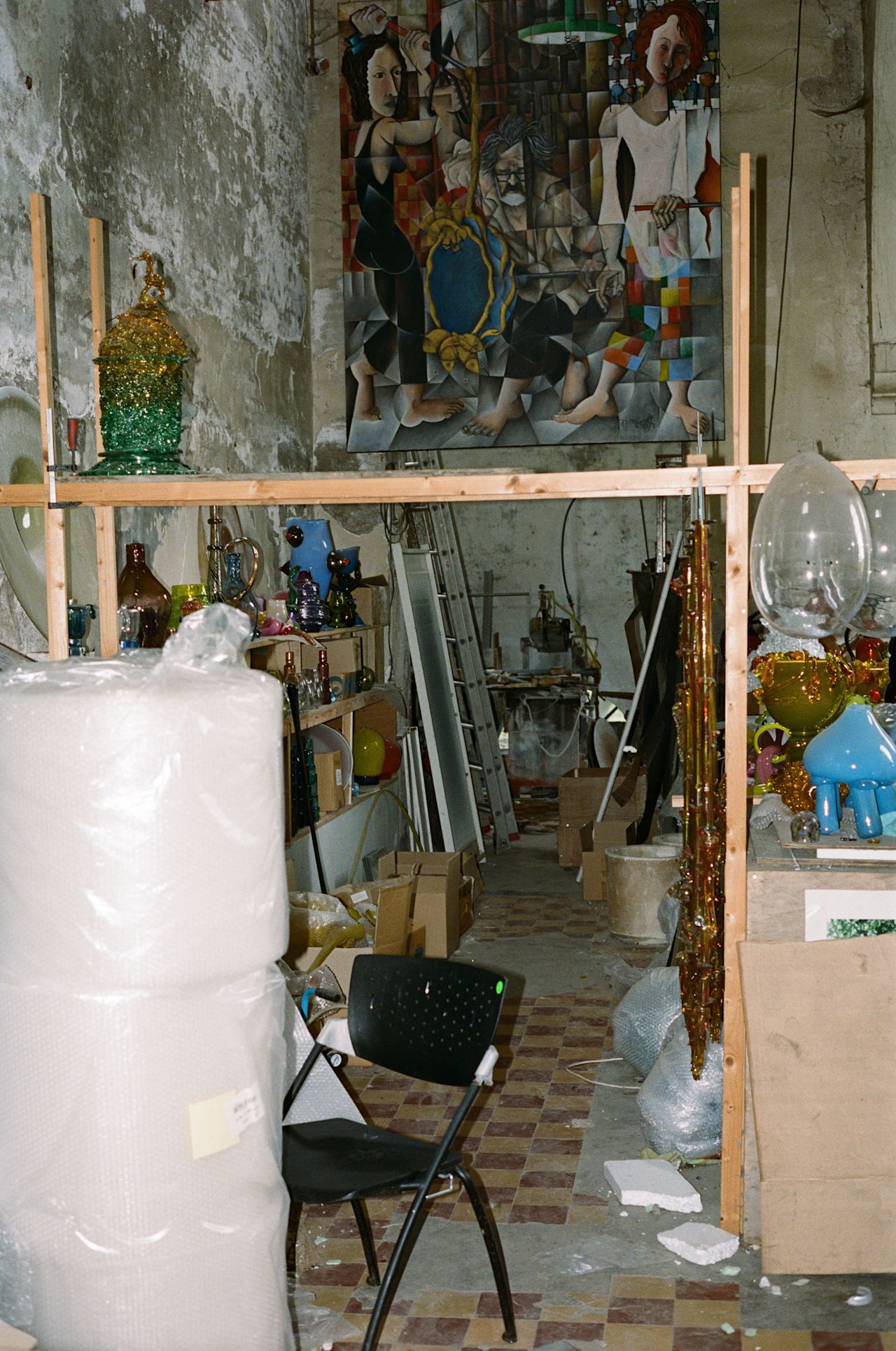
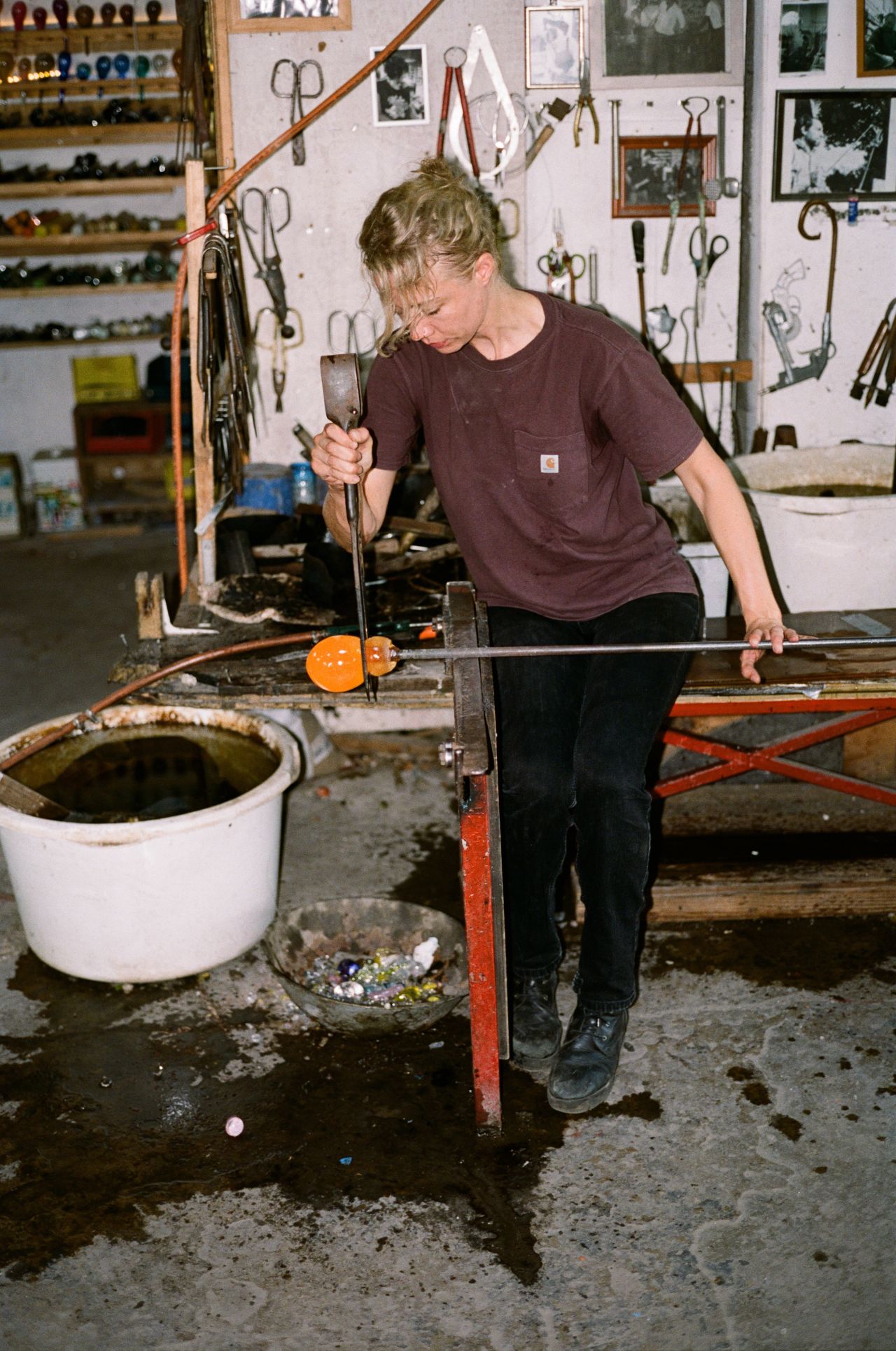
Glassworking is famously labor-intensive and time-consuming. Sikkema has developed, she notes, a characteristic style that is particularly difficult to replicate in an industrial setting; “I work in such a weird way, honestly. There are amazing, very skilled makers out there, but they are used to making the same thing a thousand times in a row. To ask them to translate my approach, to make objects differently every time, is very confusing for them. So, it is a challenge to have my work made on a larger scale.” For now, Sikkema continues to produce her pieces herself. As her work becomes more and more covetable, she is limited only by the number of objects she can produce using her new unique technique. But she is happy to continue on her journey with glass; “You need to do a lot of hours to master just a small element of glassmaking. I still have so much to learn.”
